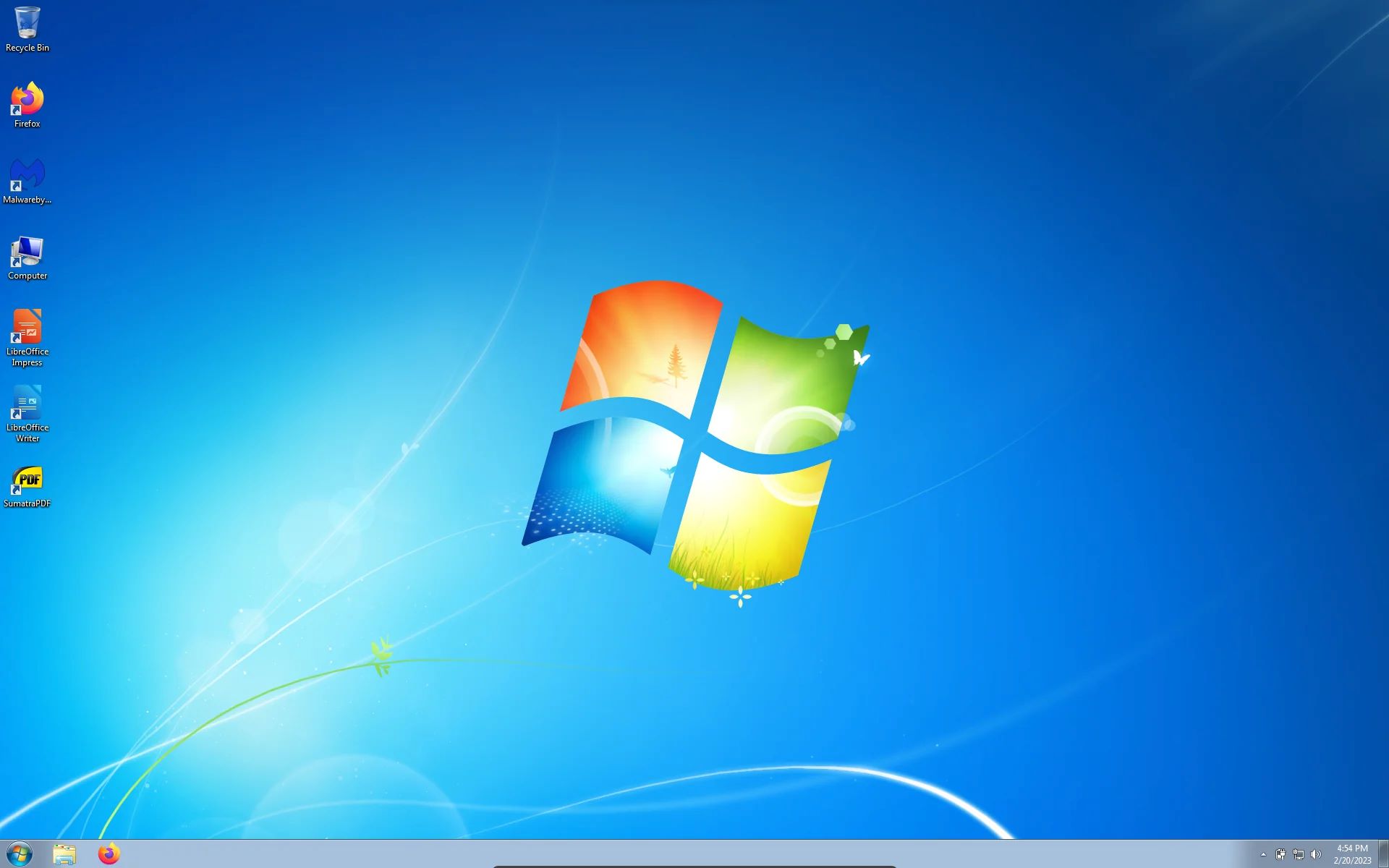Understanding VMware Workstation Pro
VMware Workstation Pro is a powerful virtualization software that allows you to run multiple operating systems on a single physical machine. It provides a virtualized environment where you can create and manage virtual machines (VMs) with ease.
VMware Workstation Pro uses a technology called “virtualization” to abstract the underlying hardware and create a virtual machine that behaves like a physical computer. Each virtual machine runs its own operating system, applications, and processes, completely isolated from other VMs and the host system.
This virtualization technology offers numerous benefits, such as:
- Flexibility: You can easily switch between different operating systems and configurations without the need for separate physical machines.
- Cost savings: Virtualizing multiple machines on a single physical system reduces the need for additional hardware, lowering costs for both hardware and electricity.
- Isolation: Each VM operates independently, ensuring that any issues or changes made in one VM do not affect others.
- Testing and development: VMware Workstation Pro provides an ideal environment for software developers and QA testers to create and test applications in different operating systems.
- Snapshot and cloning: You can easily take snapshots of VMs at any point in time, allowing you to revert to a previous state if something goes wrong. Cloning allows you to quickly replicate VMs for testing or similar setups.
With VMware Workstation Pro, you have the flexibility and power to set up and manage multiple VMs to meet your specific needs. Whether you are a developer, IT professional, or simply a tech enthusiast, this virtualization software opens up a world of possibilities.
In the following sections, we will explore the system requirements for running VMware Workstation Pro and the factors that can impact the performance of your VMs. Understanding these aspects will help you make informed decisions and optimize your virtualization experience.
System Requirements for VMware Workstation Pro
Before diving into the world of virtualization with VMware Workstation Pro, it is essential to ensure that your system meets the necessary requirements. This ensures smooth operation and optimal performance of your virtual machines. Let’s explore the key system requirements:
- Operating System: VMware Workstation Pro is compatible with various operating systems, including Windows, Linux, and macOS. Make sure your host operating system is supported by the version of Workstation Pro you are planning to install.
- Processor: Your system should have a compatible 64-bit x86 processor with Intel VT-x or AMD-V virtualization technology. This enables hardware-assisted virtualization, which significantly improves VM performance.
- Memory (RAM): A sufficient amount of RAM is crucial for running multiple VMs simultaneously. VMware recommends a minimum of 4GB of RAM for the host system, but the more RAM you have, the better performance you can expect, especially when dealing with resource-intensive applications.
- Storage: Adequate storage space is necessary to accommodate the virtual machines and their associated files. Allocate enough disk space to handle the operating systems, applications, and data required for each VM. The speed and type of storage can also impact VM performance, so using a solid-state drive (SSD) or NVMe drive is recommended for improved I/O operations.
- Display: VMware Workstation Pro supports a wide range of display resolutions and multiple monitors. Ensure that your system supports the desired display settings to maximize your workspace efficiency.
- Graphics: For enhanced graphical performance, VMware Workstation Pro leverages the host system’s graphics card. Ensure that your graphics card is compatible and has up-to-date drivers to leverage the full capabilities of Workstation Pro.
- Network: A stable network connection is essential for connecting your virtual machines to the internet, local network, or other VMs. Ensure that your system has a functioning network interface card (NIC) and the necessary network settings to enable seamless communication within your virtual environment.
It is important to note that the system requirements may vary depending on the number and complexity of VMs you plan to run. Resource-intensive applications, such as running multiple VMs simultaneously or running VMs with high-performance requirements, may require more powerful hardware and higher system specifications.
By meeting the system requirements, you can ensure a smooth and efficient virtualization experience with VMware Workstation Pro. In the next section, we will explore the factors that can affect the performance of your VMs, providing valuable insights to optimize your virtual machine configurations.
Factors Affecting VM Performance
The performance of your virtual machines (VMs) in VMware Workstation Pro can be influenced by various factors. Understanding these factors will help you optimize your VM configurations and ensure smooth operation. Let’s explore the key factors that can affect VM performance:
- Hardware Resources: The hardware resources allocated to each virtual machine, such as CPU, memory, and disk space, significantly impact performance. Inadequate resources can lead to sluggish performance, while allocating excessive resources may result in resource wastage. It is crucial to strike a balance and allocate resources based on the needs of each VM.
- Virtual Machine Configuration: Proper configuration of the virtual machine settings is vital for optimal performance. Adjusting parameters, such as processor cores, memory allocation, and virtual disk types, can have a significant impact on VM performance. Tailor these settings based on the workload and requirements of each VM.
- Host System Load: The performance of your VMs can be affected by the overall load on the host system. If the host system is already under heavy usage or running resource-intensive applications, it can lead to reduced VM performance. Prioritize critical applications and allocate resources accordingly.
- Networking: The network configuration of your VMs can impact performance. Inadequate network bandwidth or misconfigured network settings can lead to slow network speeds and latency issues. Ensure proper network configuration and allocate sufficient bandwidth to handle network traffic from VMs.
- Storage: The virtual hard disks used by your VMs and the storage configuration can impact performance. Choose the appropriate disk type (e.g., SATA, SCSI, or NVMe) based on performance requirements. Additionally, storing VM files on fast storage devices, such as SSDs or NVMe drives, can significantly improve disk access times and overall VM performance.
- Software Optimization: Keeping your VMware Workstation Pro software up-to-date with the latest updates and patches is essential for optimal performance. These updates often include bug fixes, performance improvements, and compatibility enhancements.
It is important to regularly monitor and assess the performance of your VMs to identify any bottlenecks or performance issues. Tools provided by VMware Workstation Pro, such as performance monitoring and resource usage reports, can help in identifying and addressing these issues.
By understanding and addressing these factors, you can optimize the performance of your VMs in VMware Workstation Pro. In the next section, we will explore how to estimate VM requirements and choose the right hardware for running multiple VMs.
Estimating VM Requirements
Estimating the requirements for your virtual machines (VMs) is crucial for ensuring optimal performance and resource allocation in VMware Workstation Pro. By understanding the needs of each VM, you can allocate the appropriate amount of CPU, memory, disk space, and other resources. Here are some key considerations when estimating VM requirements:
- Workload: Identify the type and intensity of workloads that each VM will handle. Is it a development environment, a web server, a database server, or a combination of different tasks? Different workloads have varying resource requirements, so understanding the workload is essential.
- CPU: Determine the required number of CPU cores and the clock speed needed for each VM. CPU-intensive workloads, such as running multiple virtual machines or performing complex calculations, will require more CPU resources.
- Memory (RAM): Assess the memory requirements of each VM based on the workload and applications it will run. Consider the memory needs of the operating system, applications, and any caching or buffer requirements. Allocating sufficient memory ensures smooth operation and minimizes disk swapping.
- Storage: Estimate the required amount of storage space for each VM, considering the operating system, applications, and data to be stored. Additionally, consider the I/O performance requirements and choose the appropriate disk type and storage device.
- Networking: Determine the network bandwidth requirements of each VM, considering the expected network traffic and the nature of the workload. High-traffic applications or network-dependent tasks may require higher network bandwidth allocation.
- Backup and Snapshot Requirements: Assess the need for regular backups and snapshots of your VMs. Consider the space required for storing these backups and snapshots, and ensure that there is enough storage capacity to accommodate them.
When estimating VM requirements, it is important to consider future scalability and growth. Anticipate potential changes in workloads and resource demands and ensure that your estimates account for these future needs.
Additionally, it is recommended to start with conservative estimates and adjust them based on actual performance and resource usage. Regular monitoring and optimization can help fine-tune your VM configurations and ensure efficient resource utilization.
By accurately estimating the requirements of your VMs, you can allocate resources effectively and optimize the performance of your virtual environment in VMware Workstation Pro. In the next section, we will explore how to choose the right hardware for running multiple VMs.
Choosing the Right Hardware
Choosing the right hardware is crucial for running multiple virtual machines (VMs) efficiently in VMware Workstation Pro. The hardware you select will directly impact the performance and capabilities of your virtual environment. Here are some key considerations to keep in mind when choosing hardware for your VMs:
- CPU: Select a CPU with sufficient processing power to handle the combined workloads of all your VMs. Look for a processor with multiple cores and high clock speed, as this will allow for better multitasking and improved performance.
- Memory (RAM): Ensure that your system has enough RAM to support the memory requirements of all your VMs. Consider allocating enough memory to each VM based on its workload and memory requirements. Having more RAM will allow for smoother operation and better performance.
- Storage: Invest in fast and reliable storage solutions for your VMs. Consider using solid-state drives (SSDs) or NVMe drives for improved disk access times and overall VM performance. Allocate sufficient disk space for each VM based on their storage requirements.
- Networking: Choose a network interface card (NIC) that supports high-speed network connections, especially if your VMs require frequent network communication. Consider gigabit Ethernet or higher for optimal network performance and reduce any potential network bottlenecks.
- Graphics: If your VMs require intensive graphical performance or software that relies on graphics acceleration, choose a graphics card that can handle these demands. Ensure that your selected graphics card is compatible with VMware Workstation Pro and has up-to-date drivers.
- Host Operating System: Check the compatibility of your chosen hardware with the host operating system you plan to use. Ensure that there are appropriate drivers and software available to support your hardware configuration.
When choosing hardware, it is important to consider the scalability and growth potential of your virtual environment. Plan for future expansion and ensure that the hardware you choose can accommodate additional VMs and increased resource demands.
It is worth mentioning that VMware Workstation Pro allows you to adjust the hardware resources allocated to each VM, providing flexibility to optimize performance based on your specific requirements. Regular monitoring and fine-tuning of resource allocations can help maximize the performance of your VMs.
By selecting the right hardware, you can ensure that your VMs in VMware Workstation Pro perform optimally and deliver the best possible virtualization experience. In the next section, we will explore some best practices for running multiple VMs in VMware Workstation Pro.
Best Practices for Running Multiple VMs
Running multiple virtual machines (VMs) concurrently in VMware Workstation Pro requires careful planning and implementation. To ensure optimal performance and resource utilization, here are some best practices to consider:
- Resource Allocation: Allocate resources such as CPU, memory, and disk space based on the needs of each VM. Monitor resource usage and adjust allocations as necessary to prevent bottlenecks or resource shortages.
- Organize VMs: Create folders or groups to organize your VMs logically. This will help you easily locate and manage specific VMs, especially when dealing with a large number of virtual machines.
- Configure Networking: Use appropriate networking configurations to facilitate communication between VMs and the host system. You can choose from options like bridged, NAT, or host-only networking based on your specific requirements.
- Snapshots and Backups: Regularly take snapshots of your VMs or back them up to ensure data integrity and allow for easy recovery if issues arise. This is particularly important before making significant changes or updates to your VMs.
- Monitor Performance: Utilize the performance monitoring tools provided by VMware Workstation Pro to keep an eye on resource usage and identify any performance bottlenecks. Address any performance issues promptly to maintain optimal VM performance.
- Use Lightweight Tools: Opt for lightweight tools and applications within your VMs to minimize resource consumption. Avoid running unnecessary services or applications that might drain system resources.
- Keep VMs Updated: Regularly update the operating systems and software within your VMs to ensure the latest security patches, bug fixes, and performance enhancements. This helps maintain stability and performance.
- Use VM Cloning: Instead of creating new VMs from scratch, consider cloning existing VMs to save time and ensure consistency across your virtual environment. Cloning allows you to create replicas of VMs with the same configurations and settings.
- Remove Unused VMs: Periodically review and remove any VMs that are no longer needed. This frees up system resources and prevents clutter within your virtual environment.
By following these best practices, you can optimize the performance of your multiple VM setups in VMware Workstation Pro. Regular monitoring, maintenance, and resource management will ensure a smooth and efficient virtualization experience.
In the next section, we will explore techniques for optimizing VM performance and addressing any performance issues that may arise in VMware Workstation Pro.
Optimizing VM Performance
Optimizing the performance of your virtual machines (VMs) can significantly enhance your virtualization experience in VMware Workstation Pro. By following these best practices, you can ensure smooth operation and efficient resource utilization:
- Allocate Resources Appropriately: Ensure that each VM has the necessary CPU cores, memory, and disk space allocated based on its workload and requirements. Avoid overallocating resources, as it can impact the performance of other VMs and the host system.
- Enable Hardware Acceleration: Leverage hardware acceleration and virtualization extensions, such as Intel VT-x or AMD-V, to improve overall VM performance. Enabling hardware-assisted virtualization enhances CPU performance and reduces overhead.
- Use Guest Tools: Install VMware Tools or other guest tools within your VMs to enhance their performance and functionality. These tools provide optimized drivers, improved graphics support, and seamless integration between the host and guest systems.
- Optimize Storage: Utilize efficient storage techniques, such as thin provisioning and deduplication, to minimize the disk space used by your VMs. Regularly monitor and defragment virtual disks to maintain optimal performance.
- Adjust Power Settings: Configure the power management settings within your VMs to balance performance and energy efficiency. Choose appropriate power profiles to meet the specific needs of your VMs.
- Enable Transparent Page Sharing: VMware Workstation Pro offers a feature called Transparent Page Sharing (TPS), which allows identical memory pages to be shared among VMs, reducing memory usage. Enable TPS to optimize memory utilization.
- Limit Background Processes: Reduce the number of unnecessary background processes within your VMs to free up resources and improve performance. Disable or throttle services and applications that are not critical to the VM’s workload.
- Optimize VM Networking: Configure your VM networking settings effectively to optimize network performance. Use the appropriate network adapter type and adjust network settings based on your specific requirements.
- Regularly Update Software: Keep your host operating system, VMware Workstation Pro, and VM software up to date with the latest updates and patches. This ensures stability, security, and compatibility with the latest features.
Regularly monitoring the performance of your VMs and addressing any performance issues promptly is essential for maintaining optimal virtualization performance. Utilize the performance monitoring tools provided by VMware Workstation Pro to identify bottlenecks and resource usage trends.
By implementing these optimization techniques, you can unlock the full potential of your VMs in VMware Workstation Pro and enjoy a seamless and high-performing virtualization experience.
In the next section, we will explore how to monitor resource usage and troubleshoot performance issues in VMware Workstation Pro.
Monitoring Resource Usage
Monitoring the resource usage of your virtual machines (VMs) is essential for optimizing performance and ensuring efficient resource utilization in VMware Workstation Pro. By monitoring resource usage, you can identify areas of improvement, prevent bottlenecks, and make informed decisions to optimize your VM configurations. Here are some key strategies for monitoring resource usage:
- Task Manager: Utilize the built-in Task Manager provided by the host operating system to monitor CPU, memory, disk, and network usage of your VMs. This allows you to track resource-intensive processes and identify any performance issues.
- Performance Monitoring Tools: VMware Workstation Pro offers robust performance monitoring tools to track resource usage within your VMs. Tools like the Performance tab, Charts, and Statistics provide detailed insights into CPU, memory, disk, and network performance.
- Resource Allocations: Regularly review and adjust the resource allocations of your VMs based on their performance metrics. Monitor resource usage patterns and allocate resources accordingly to ensure optimal performance without wasting resources.
- Alerts and Notifications: Configure alerts and notifications within VMware Workstation Pro to be notified of any critical resource usage thresholds being exceeded. This allows you to take immediate action and address performance issues before they impact your VMs.
- Host System Monitoring Tools: Monitor resource usage on the host system using third-party monitoring tools or built-in utilities. This provides insights into the overall system health and can help identify any underlying issues affecting VM performance.
- Logs and Metrics: Analyze logs and metrics provided by VMware Workstation Pro to identify performance trends and troubleshoot any issues. These logs contain valuable information about resource usage, errors, and system events.
- Performance Baselines: Establish baseline performance metrics for your VMs to compare against. Regularly benchmark your VMs and monitor performance over time to identify any deviations or trends that require attention.
Regularly monitoring resource usage provides valuable insights into the performance of your VMs and helps you make data-driven decisions to optimize their configurations. By actively monitoring resource utilization, you can prevent performance bottlenecks, ensure smooth operation, and maximize the efficiency of your virtual environment.
In the next section, we will explore techniques for troubleshooting performance issues in VMware Workstation Pro, helping you identify and resolve any performance-related challenges that may arise.
Troubleshooting Performance Issues
While VMware Workstation Pro provides a robust virtualization environment, performance issues can occasionally arise. Troubleshooting these issues promptly is crucial for maintaining optimal performance and a smooth virtualization experience. Here are some key techniques for troubleshooting performance issues in VMware Workstation Pro:
- Identify the Symptoms: Start by identifying the specific symptoms of the performance issue. Is it slow VM response times, high CPU usage, or excessive disk I/O? Understanding the symptoms will help narrow down the potential causes.
- Check Resource Utilization: Monitor the resource utilization of your VMs and host system to determine if there are any resource bottlenecks. Analyze CPU, memory, disk, and network usage to identify any anomalies or excessive utilization.
- Review VM Configurations: Double-check the configurations of your VMs to ensure they are optimized for performance. Verify CPU and memory allocations, disk types, and network settings to ensure they align with the requirements of your VM workloads.
- Check for VM Snapshots: If you have taken snapshots of your VMs, consider the impact they may have on performance. Excessive or large snapshots can increase disk I/O and reduce overall VM performance. Consolidate or remove unnecessary snapshots if possible.
- Scan for Malware or Viruses: Perform a thorough scan of your VMs to check for any malware or viruses that could be affecting performance. Malware can consume system resources or cause abnormal behavior within the VM.
- Update Software and Drivers: Ensure that your host operating system, VMware Workstation Pro, and VM software are up to date with the latest updates and patches. Outdated software or drivers can introduce compatibility issues and impact performance.
- Review Host System Resources: Check the resource utilization of your host system. If the host system is under heavy load from other processes or applications, it can impact the performance of your VMs. Consider adjusting resource allocations or limiting resource-intensive activities on the host.
- Investigate Networking Issues: If you are experiencing network-related performance issues, review your network configurations. Check for any misconfigured network settings, network congestion, or network hardware issues that could be impacting performance.
- Review Log Files: Examine the log files provided by VMware Workstation Pro for any error messages or warnings that could shed light on the performance issue. Log files often contain valuable information to help diagnose and resolve problems.
- Consult VMware Community Forums: If you are unable to resolve the performance issue on your own, seek advice from the VMware Community Forums. The forums are a valuable resource where you can find guidance from experts and fellow users facing similar challenges.
By systematically troubleshooting performance issues, you can identify and resolve underlying problems to restore optimal performance in VMware Workstation Pro. Regular monitoring, maintenance, and staying up to date with software updates will help mitigate performance issues and ensure a smooth virtualization experience.
In the next section, we will conclude with a recap of the key points discussed in this article on running multiple VMs in VMware Workstation Pro.
Conclusion
VMware Workstation Pro offers a powerful virtualization platform to run multiple virtual machines (VMs) on a single physical machine. By understanding the system requirements, estimating VM requirements, choosing the right hardware, and implementing best practices, you can optimize the performance and efficiency of your VMs in VMware Workstation Pro.
Effective resource allocation, proper configuration, and regular monitoring of resource usage are essential for achieving optimal VM performance. By monitoring resource utilization, you can identify bottlenecks and make informed decisions to optimize your VM configurations. Troubleshooting performance issues promptly and efficiently is crucial for maintaining a smooth virtualization experience.
Whether you are a developer, IT professional, or simply an enthusiast, VMware Workstation Pro empowers you to explore different operating systems, test applications, and streamline your workflows. With its flexibility, isolation, and cost-saving benefits, VMware Workstation Pro opens up a world of opportunities for virtualization.
By following the best practices outlined in this article, you can enhance the performance of your VMs, improve resource utilization, and maximize the efficiency of your virtual environment. Regular monitoring, maintenance, and staying up to date with software updates will ensure a seamless and high-performing virtualization experience in VMware Workstation Pro.
Embrace the power of VMware Workstation Pro and unleash the full potential of your virtual machines to meet your computing needs and explore new frontiers in the world of virtualization.

























